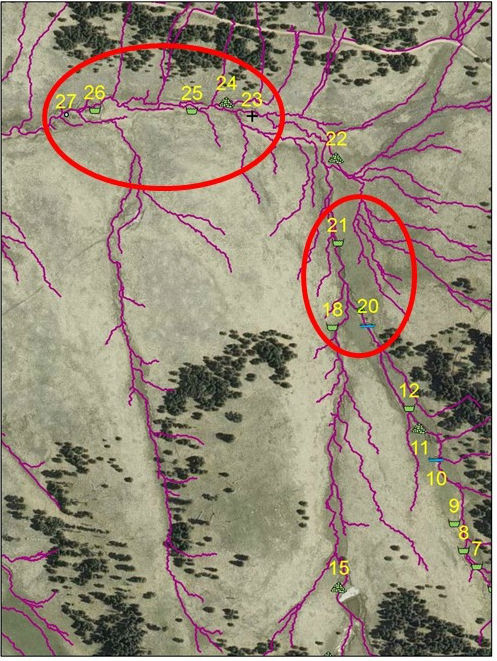Erosion Analysis and Restoration Techniques Toolset™
Keystone Restoration Ecology has provided assessment services to restore watersheds for the past fourteen years. This work is usually performed on foot to locate the areas that are unstable and unhealthy. Often project areas are chosen because they can be easily seen or are very damaged and are typically expensive to restore for the benefits gained. Restoration funds are limited and EARTh™ provides a comprehensive analysis of the entire area under consideration for restoration. Cost-effective restoration begins with a top-down analysis and prioritization and chooses the most economic and most effective restoration treatments. Once treated, the watershed begins a new trajectory of positive ecological feedback and enhancement. 
PRIORITIZATION
KRE begins with a digital elevational data model to analyze the landscape. The toolset:
· Identifies the most damaging areas of erosion on the landscape (called headcutting) and prioritizes treatments by cost and restoration effectiveness.
· Identifies the most effective areas for restoration on the landscape by the plug and pond technique, which restores gullies to their historic channel, raises water tables, captures sediment, creates wetlands and reduces downstream flooding.
Most importantly the Erosion Analysis Restoration Techniques Toolset prioritizes treatment areas base on restoration potential, cost and techniques. Depending on the project, KRE provides types of structures, costs and materials needed for implementation.
OUTPUTS
Additional outputs generated can include locations for road drainage, erosion control structures, water flow paths and watershed areas. These locations are prioritized based on effective restoration sites for the cost. For example perhaps a project area is considering work in 4 different tributaries draining into a main channel. EARTh™ Toolset can analyze conditions in all 4 tributaries and may identify 6 location in just 2 tributaries to address. These priority areas identified will have the greatest ecological benefit to the watershed. EARTh would also recommend the types of structures to build. Based on the prioritization ability of the toolset, limited funds are applied to the significant areas with the most cost effective restoration structures.